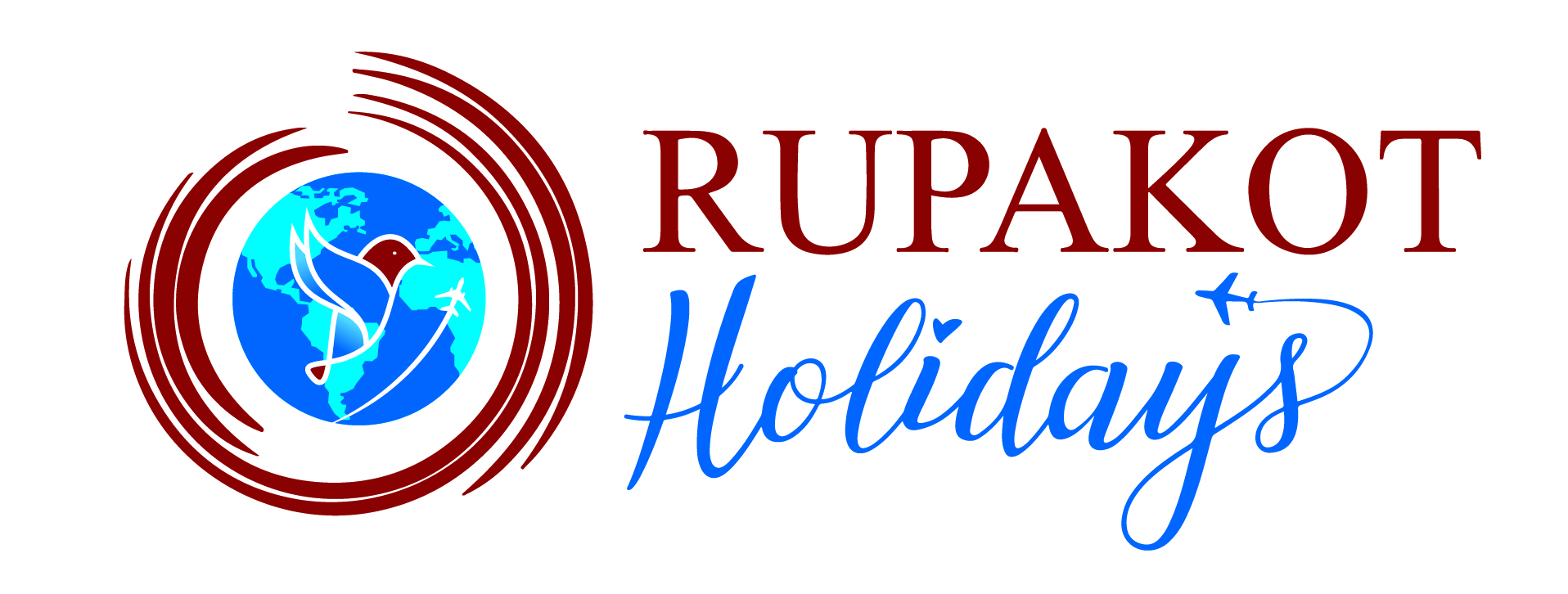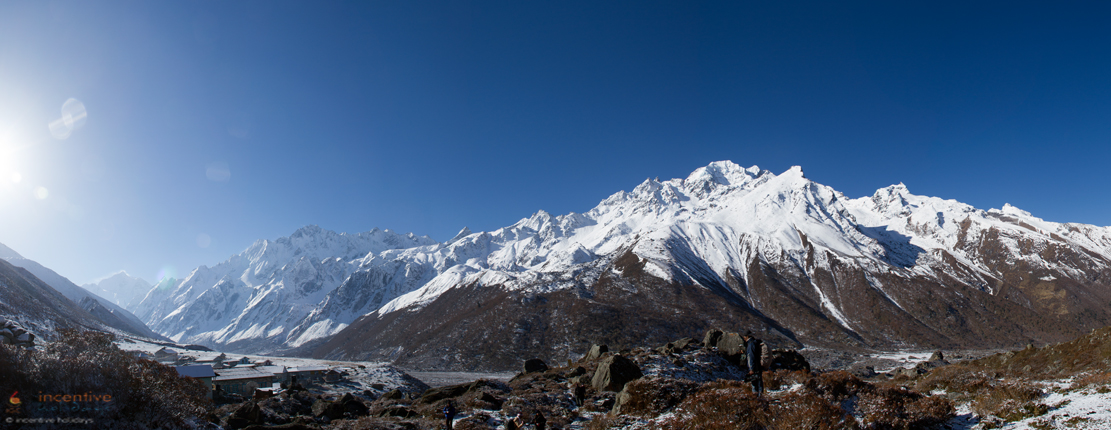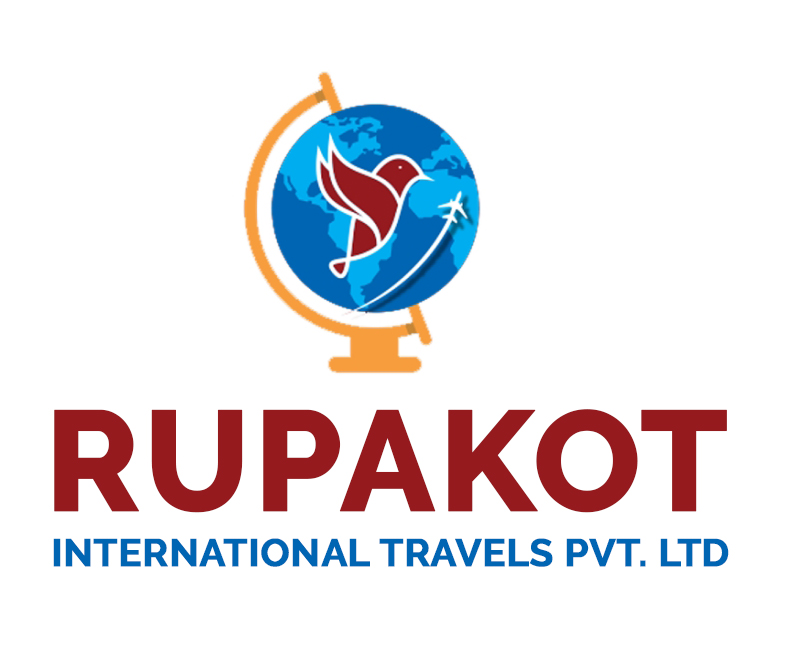
Become friends with Rupakotholidays to be the first one to know about exclusive deals and discounts.

Nestled near the Tibetan border of the country, the Langtang region stands as a haven mostly inhabited by Tamangs, Sherpas, and Tibetans. Among its many treasures, the Langtang Valley trek is particularly famous for the holy lake of "Gosainkunda," a sacred pilgrimage site for Hindu devotees.
Gosainkunda: A Sacred Pilgrimage
The Langtang Valley trek gains prominence, especially during the full moon day of August each year, when thousands of Hindu and Buddhist devotees embark on a pilgrimage to the high-altitude Gosainkunda lake. This spiritual journey adds a layer of cultural richness to the already breathtaking landscapes of the region.
Famous Peaks and Religious Sites
The Langtang region boasts famous Himalayan peaks like Langtang-Ri, Langtang Lirung, and Dorge Lakpa Peak, creating a majestic backdrop for trekkers. Along the trekking route, one encounters several Buddhist temples and monasteries, providing a tranquil pause for spiritual reflection amidst the grandeur of the mountains.
Exploring Langtang National Park
As part of the Langtang Valley trek, a visit to Langtang National Park is a must. This protected area not only showcases the stunning natural beauty of the region but also offers a chance to spot various wild animals and birds. Monkeys, musk deer, Pika, and the national bird of Nepal, the colorful Danphe, add a touch of wildlife fascination to the trekking experience.
Rich Ecosystem and Natural Preservation
The Langtang Valley boasts a rich ecosystem, well-preserved and thriving. Trekkers can revel in a wide range of flora and fauna, making every step a journey of natural discovery. The lush landscapes and diverse wildlife contribute to the unique charm of the Langtang Valley trek.
An Exceptional Himalayan Experience
While Langtang Valley trek may not be as famous as the Annapurna Base Camp or Everest Trek, it offers an exceptional Himalayan experience. The trek's special features lie in its cultural significance, pristine landscapes, and the sense of spiritual connection that permeates the entire journey. Langtang Valley trek stands as a testament to the diversity and allure of the Himalayas.
In conclusion, embarking on the Langtang Valley trek is not just a physical endeavor; it's a pilgrimage, a communion with nature, and a cultural exploration all rolled into one. The Langtang region beckons adventurers seeking a unique and immersive Himalayan experience.
Day 1: Arrival Kathmandu at the Tribhuwan International Airport.
You will find our representative awaiting your arrival by displaying a plastic board with your name highlighted in large letters on the board. Our office vehicle will be parked at the airport to pick you up and drop you to your designated hotel. On reaching your hotel, enjoy your welcome drinks and refresh. Our senior trek leader will later meet you at the lobby of your hotel to brief you on the details of your trek. Get familiar with your surroundings, have supper and get rid of the jet lag with good night sleep. Your first overnight in the valley of temples.
Day 2: Free at your own leisure.
After your first night in Kathmandu, you will be well informed on arrival about what to do in your next free day.
The choice is yours: either you can stroll around the nearby market on your own or you can opt for a half/full day guided sightseeing tour in Kathmandu at places of interest. The cost for this extra tour is not added in the trek cost and you have to pay extra depending on the places you choose to visit. When this is done, you might find time to shop around the city in the evening time if you need any gears for the trek. Overnight at your hotel
Day 3: Kathmandu to Syabru Besi [1,400 m].
From Kathmandu, we take a 9 - hour scenic drive to Syabru Besi, a little trading town for the Langtang area. After driving for 30 km, we approach pristine villages on the banks of the river Trishuli. We also get to view the enthralling panorama of the Himalaya, including the Annapurnas, Manaslu, Ganesh Himal and peaks of the Langtang region. Overnight at your lodge.
Day 4: Syabru Besi to Lama Hotel [2,748 m], 5 - 6 hrs.
The first part of the trail crosses through the Bhote Koshi and follows the Langtang Khola. This trail is a gradual ascent up to Bamboo passing through landslide zones. Afterwards, we trek down gently to Rimche (2,400 m) through Bamboo (1,960 m) which lies at the bank of Langtang Khola. En-route we can see red pandas, playful monkeys and bears if you are lucky. Stay overnight at our lodge.
Day 5: Trek to Langtang village [3,500 m], 6 hrs reckoned.
After breakfast, we continue climbing amidst occasional glimpses of Langtang Lirung between the trees. At Ghora Tabela [3000 m], the trail emerges from the forest. While walking hereabouts, we get to observe playful white monkeys enjoying themselves and hear the sweet chirping of merry local birds. The trail continues to climb gently and the valley widens, passing a few temporary settlements used by herders who bring their livestock to graze in the high pastures during the summer months. There is a monastery we can visit shortly before arriving at the village of Langtang, the headquarters of the Langtang National Park. The houses of Langtang and its neighbouring villages are of the flat-roofed Tibetan style, surrounded by stone walls enclosing fields of buckwheat, potatoes, wheat, turnips and barley. Stay overnight at our lodge.
Day 6: Trek to Kyangjing [3800m], 3 hrs.
The trail skirts gradually through rich yak pastures and interesting customary villages of Muna to Singdun. We cross a wooden cantilever bridge and reach a wide valley after climbing a moraine. Finally, on ascending the mountain passes, we arrive at Kyagjing Gompa. There is a small monastery and a government-operated cheese factory hereabouts. We can sample some of the fresh cheese down here. Overnight at our lodge.
Day 7: A day for rest in Kyangjing.
We take a day off for acclimatization and proper rest. Reckon this is good for the body and the limbs. We get to explore interesting places like the monastery, cheese factory etc. We can climb Kyangjin Ri located at 4350m from where great views of snow-capped mountains are spread out in wonderful display right next to you. We can walk up the moraine to see the spectacular mountain ridges and undulating glaciers. Overnight at our lodge.
Day 8: Trek to Lama Hotel [2,784 m], 6 hrs reckoned.
From Kyangjing, we take revert back to Lama Hotel. As we retrace our steps, we follow the Langtang Khola to Langtang village and on to Ghora Tabela. We haul up briefly for lunch and thereafter continue the steep descent to Lama Hotel to bunk out for the night.
Day 9: Trek to Syabru Besi [1,400 m], 4 - 5 hrs reckoned, at your pace.
After a hearty breakfast, From Lama Hotel we head back to Syabru Besi. We can wander around the undulating path leading to the village. This gives us an opportunity to get insights into the gripping culture and customs of the Tamang community, a footloose and fancy-free ethnic tribe. We can also simply relax in the sunshine while relishing the beauty of the sublime Himalayan Mountains. Overnight at our lodge.
Day 10: Drive back to Kathmandu.
It’s a seven hours drive through a scenic highway on our way back to Kathmandu. We check into our hotel and the rest of the day is free to chill out and reflect on a wonderful trip. Overnight at our hotel.
Day 11: Final departure for your connecting flight home sweet home.
Should you require any extensive activities, please do let us know, we have a vast array of different programs that will even interest the discerning traveller, our ‘No frills’ prices will certainly not hurt your pockets. It’s been nice getting to know you. Adios Amigo!! And take care on your way home.
Note: The above itinerary should be taken only as a guideline; it could change due to weather, availability of clean water and campsite, trail or any other unforeseen conditions relating to environmental hazards that can be unpredictable. In case of any trek Itinerary alteration or if your program needs to be re-routed to any other area, your Group Leader or Sherpa Guide’s decision will be final after consulting with the group. You will be happy anyways; we ensure that because ‘Rupakot Holidays’ always has contingency plans drawn up in the event of emergencies.
Our accommodation whilst on a trek on twin room sharing basis in a simple locally run lodges, known as teahouses and it’s a great pleasure to support these small local businesses. Rooms are simply furnished with just a bed and occasionally a small table. You will need to bring a sleeping bag. Only a few lodges have attached toilet during the trek. However, please note, normally washing and toilet facilities are shared and may be in a separate part of the teahouse or outside. It’s great to enjoy the company of your fellow travellers and share a tale with other trekkers in the evening in the dining area.
If you are a solo traveller, you will share a room with someone else of the same sex as your group. If you prefer a single room, you may indicate your preference and get single rooms on request by paying extra as indicated on the cost section. But, you need to understand that in teahouses/lodges of higher elevation area single room is not always possible. We guarantee a single room in Kathmandu only and during trek single room is may not be possible.
On this trek we provide standard breakfast, lunch and dinner, tea or coffee will also be included with each meal. Your guide will help with menu selection and ensure that you get the best value meals possible. Although the food is usually plentiful and delicious, you should be aware that the menu is not normally extensive. Most teahouses offer a variety of rice and noodle dishes, as well as soup and seasonal vegetables. You can buy packaged water (bottled mineral water) from local lodge and shop en route or you can also ask your guide to fill your water bottle with boiled water (extra cost to be paid) and treat with water purification pills.
We strongly recommend that you check your government’s travel advisory for up-to-date information and advice about your destination: safety and security, entry requirements, health, local laws and customs, including advice re the legality of and local attitudes towards same-sex relationships.
Tipping is the accepted way of saying ‘thank you’ for good service. Tips do not form part of the wages of your guides, porters and trek crew but they are very much appreciated. It is important to remember that tipping is voluntary and should be dependent on good service. Normally the tips are given at the end of the trek and this is best done as a group. Most groups will give the tips with a bit of ceremony (or sometimes a party) on the last evening, to mark the end of the trip. The amount depends on your budget and appreciation of their work.
Autumn (mid-Sept to mid-Dec) and Spring (March to May) are the best seasons for the Langtang Valley Trek. The weather is sunny and warm, with outstanding views but the nights are cold and can fall to freezing. Winter (Dec, Jan, Feb) is also good for this trek, only colder (obviously). The trekking routes are crowded during spring and autumn but during winter the routes are not packed and you could enjoy rather best of nature. However, please note, there may be snowfall/avalanches during the winter.
Popular Sightseeing places in Kathmandu:
Half day sightseeing includes visit two of these places and full day sightseeing includes three of these places inside the ring-road of Kathmandu. Besides the above mentioned places, the charges will apply depending on the distance accordingly.
Trip Duration:11
accomodation:Camping/ Lodge (Teahouse)
Max Altitude:4,350 m
Trek Type:FOT/TH /GAP
Grade:Moderate Trek
Trip Code:RH/LR/01
Duration:11
Primary Activities:Sightseeing and trekking
Arrival City:Kathmandu
Departure City:Kathmandu
Transportation:Private car or tourist bus
© 2025 Rupakot Holidays (P) Ltd. All rights reserved.
Powered by: Nectar Digit
© 2025 Rupakot Holidays (P) Ltd. All rights reserved.
